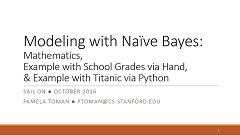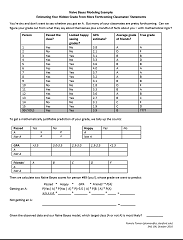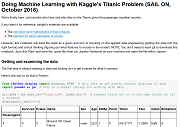As the progenitor and leader of SAIL ON, the Stanford AI Lab’s year-round effort to attract and keep underrepresented minorities in the field of Artificial Intelligence, I engage high schoolers about artificial intelligence, machine learning, and the positive social impacts of our field. SAIL ON meets once a month in the Computer Science building at Stanford. Its trifold focus allows past participants in the SAILORS two-week summer camp to continue to learn about AI, to nurture strong relationships with each other, and to lead outreach projects that bring the technical, humanistic, and diversity missions of the AI outreach program to the wider community.

As the educational component of the October meeting of SAIL ON, we discussed and applied Naive Bayes modeling. Like other machine learning methods, Naive Bayes is a generic approach to learning from specific data such that we can make predictions in the future. Whether the application is predicting cancer/whether you’ll care about an email/who will win an election, we can use the mathematics of Naive Bayes to connect a set of input variables to a target output variable. (Of course, some problems are harder than others!)
We focused on the derivation of Naive Bayes with a chalk-and-talk discussion (slides), identifying why Naive Bayes is mathematically justified and posing some deeper thought questions. We checked understanding with a hand-calculation of a Naive Bayes problem (handout): does a shy student received an A in a class, given some observations about her and some observations about more forthcoming students? We then turned to a Jupyter Notebook that applies the same methods on a larger scale, working on the Titanic challenge from Kaggle with an applied introduction to pandas and sklearn: given passenger manifest records, can we predict who survived?
By providing this basis, I hope to increase appreciation for applications of what students are seeing in their math classes, and to facilitate students moving further on their own with applied machine learning before November’s meeting.

